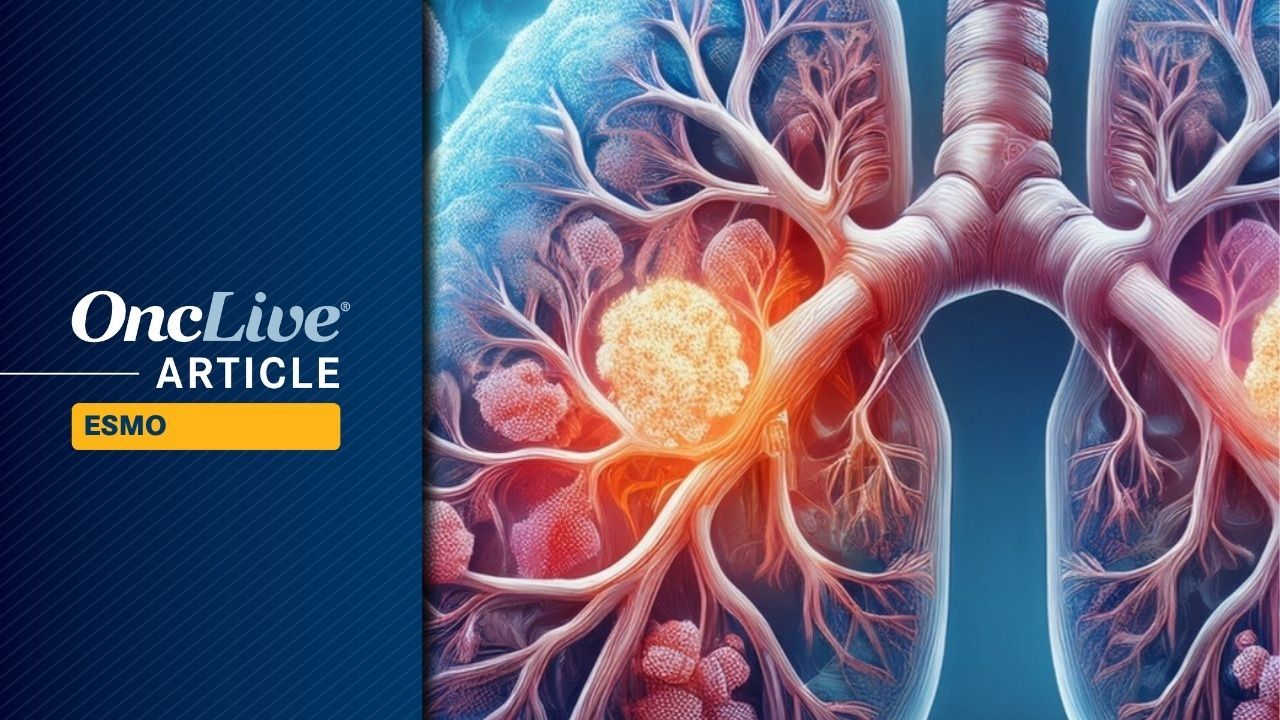Health
Tarlatamab and Chemoimmunotherapy Show Promise in Lung Cancer Trials

A combination of tarlatamab and first-line chemoimmunotherapy has demonstrated encouraging early efficacy signals in patients with extensive-stage small cell lung cancer (ES-SCLC). Results from the phase 1b DeLLphi-303 study (NCT05361395) were presented at the 2025 ESMO Congress and published in The Lancet Oncology. The findings indicate that this treatment regimen leads to durable responses and a manageable safety profile.
The study reported an objective response rate (ORR) of 71% (95% CI, 61%-80%) at a median follow-up of 13.8 months (95% CI, 12.5-15.0). Among the participants, 5% achieved a complete response, while 66% experienced a partial response. Approximately 11% of patients had stable disease, with 8% experiencing progressive disease, and 9% of responses remaining non-evaluable. The median duration of response (DOR) was reported at 11.0 months (95% CI, 8.5-NE).
In addition, the disease control rate was noted at 82% (95% CI, 73%-89%), with a median duration of disease control of 10.7 months (95% CI, 7.7-18.8). Notably, 39% of patients maintained disease control for at least 52 weeks, and 49% had ongoing responses at the data cutoff.
Lead study author Martin Wermke, MD, who serves as the director of the Trial Management/Early Clinical Trial Unit at the German Cancer Research Center, emphasized the importance of these findings in his oral presentation. He stated, “I hope I could convince you that the combination of another frontline chemoimmunotherapy that is PD-L1 targeting in the maintenance setting is safe and has a manageable toxicity profile.” Wermke further noted that there was no evidence of additive or synergistic toxicity.
The safety profile of the combined treatment was deemed manageable. With a median treatment duration of 46 weeks (IQR, 14-60), three dose-limiting toxicities were observed. While all patients experienced treatment-related adverse events (TRAEs), the majority were classified as grade 3 (43%) or grade 4 (35%). Tragically, one patient died due to a TRAE related to sepsis from the chemotherapy component.
Tarlatamab-related adverse events leading to treatment discontinuation occurred in 6% of patients. Immune-related adverse events, excluding cytokine release syndrome (CRS) and immune effector cell-associated neurotoxicity syndrome (ICANS), were reported in 2% of cases. Wermke explained that the addition of tarlatamab to chemoimmunotherapy resulted in a safety profile consistent with the individual agents involved.
Presently, the standard treatment for patients with ES-SCLC consists of chemoimmunotherapy followed by PD-1/PD-L1 therapy as maintenance. Tarlatamab, a bispecific T-cell engager, has also been evaluated as a single agent in the second-line setting and in frontline maintenance alongside a PD-L1 inhibitor.
The DeLLphi-303 study enrolled adult patients with ES-SCLC who had received at least one cycle of chemotherapy, which included platinum-etoposide and an anti-PD-L1 inhibitor, regardless of their response to this therapy. Participants were required to have measurable disease according to modified RECIST 1.1 criteria, an Eastern Cooperative Oncology Group (ECOG) performance status of 0 or 1, and no active autoimmune diseases requiring immunosuppressive therapy. Patients with treated and asymptomatic brain metastases were included.
In the initial cycles, patients received 20 mg of tarlatamab intravenously (IV) every three weeks in conjunction with platinum-etoposide and a PD-L1 inhibitor, either atezolizumab (Tecentriq) or durvalumab (Imfinzi), both administered every three weeks. The treatment continued until disease progression.
The study’s co-primary endpoints included dose-limiting toxicities, treatment-emergent adverse events, and TRAEs. Secondary endpoints evaluated ORR, DOR, disease control, progression-free survival (PFS), and overall survival (OS).
Baseline characteristics indicated that the median age of participants was 63 years (range, 37-86), with 67% male representation. Most patients were White (74%), followed by Asian (16%) and Black (1%). At diagnosis, 77% had extensive-stage disease, and 55% had an ECOG performance status of 1. Notably, 75% of patients were former smokers, and 67% had received a PD-L1 inhibitor during their first standard care cycle.
Further efficacy data revealed a median PFS of 10.3 months (95% CI, 7.2-13.6), with a 12-month PFS rate of 43.1% (95% CI, 32.0%-53.7%). The median OS remains undetermined, but the 12-month OS rate with the tarlatamab regimen was estimated at 80.6%.
Investigators assessed treatment-emergent CRS and ICANS, with most occurrences happening during the first cycle of tarlatamab. These events primarily fell within grades 1 and 2, and all resolved without serious complications. The median time to CRS onset was approximately 13.3 hours from the last dose, while ICANS onset occurred after a median of five days.
Wermke concluded that these findings support further investigation of this regimen, which will be explored in the upcoming phase 3 DeLLphi-312 study (NCT07005128). Disclosures from Wermke included honoraria and funding from various pharmaceutical companies, indicating a comprehensive involvement in the research field.
-

 Business4 days ago
Business4 days agoInvestors Eye Potential $60,000 Gains with Ozak AI Token
-

 Politics5 days ago
Politics5 days agoFormer Pastor Arrested on Human Trafficking and Indecent Charges
-

 Business5 days ago
Business5 days agoQuotient Wealth Partners Adjusts Holdings in iShares Russell 1000 ETF
-

 Lifestyle5 days ago
Lifestyle5 days agoNatty from KISS OF LIFE Stuns in Micro-Shorts at Seoul Event
-

 Politics4 days ago
Politics4 days agoSkip Bayless Critiques Travis Hunter’s Game Day Baptism
-

 Entertainment5 days ago
Entertainment5 days agoUtah Residents Face Resource Shortages Amid Ongoing Government Shutdown
-

 Business5 days ago
Business5 days agoCalifornia to Ban All Plastic Bags in Grocery Stores by 2026
-

 Entertainment5 days ago
Entertainment5 days agoPete Davidson Surprises Pregnant Girlfriend with Private Jet to Concert
-

 Entertainment5 days ago
Entertainment5 days agoAce Frehley, KISS Guitarist, Passes Away at 74 After Fall
-

 Science5 days ago
Science5 days agoCommunity Mourns Loss of Judith Ernst, Pioneer Educator at 81
-

 Politics5 days ago
Politics5 days agoIberia Parish Sees Surge in Marriage Licenses Issued in October
-

 Science5 days ago
Science5 days agoMIT Develops Groundbreaking 3D Brain Models for Personalized Therapies









